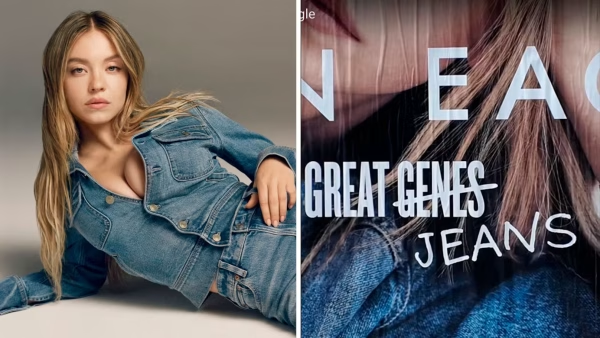
American Eagle began its fall campaign with Sydney Sweeney on July 23, leaning into the line “Sydney Sweeney has great jeans.” What could have been a playful pun quickly spiraled into controversy as viewers noticed the wordplay between “jeans” and “genes” and tied it to troubling histories of eugenics. This is considering that the ad highlighted Sweeney’s blonde hair and blue eyes.
Instead of being perceived as lighthearted, the ad was criticized as tone-deaf and outdated, fueling a larger conversation about beauty standards rooted in exclusion, rather than inclusivity. What could have been a chance to celebrate individuality and diversity reinforced exclusion instead, sending a message that worth is rooted in body exposure.
A 1995 Calvin Klein ad gained similar backlash, as it was accused of alluding to child exploitation. The ad filmed models including Kate Moss and as they undid their jeans and were asked, “Are you nervous?” That ad drew outrage for its predatory undertones, yet American Eagle’s new campaign seems to echo the same tone-deaf playbook.
American Eagle eventually issued a statement clarifying that the campaign was meant to celebrate jeans and confidence in how people wear them. But the explanation did little to quiet the persisting criticism. Sweeney herself stayed silent, avoiding direct engagement with the controversy and instead shifted her online presence back to promotions for her new film. Her silence mirrored how the campaign was received as a missed opportunity to address the issues head-on.
The criticism becomes even sharper when you consider who American Eagle is targeting. According to Richard Kestenbaum, a reporter from Forbes Magazine, “Among consumers aged 15 to 25, American Eagle Outfitters makes the most popular jeans.” That is not just any demographic; that is teen girls and young women still forming their sense of identity and self-worth. Instead of delivering a campaign that could uplift, empower or inspire its core audience, the brand chose to spotlight a grown actress in a sexualized and pun-driven ad.
In most of the campaign images, Sweeney’s chest was emphasized, her body positioned as the focal point. Is that the message that should be sent to teenage girls — the idea that their value lies in how much skin they show? Rather than modeling confidence inclusively, the campaign highlighted sexualization. This advertisement was harmful rather than aspirational.
In the end, the controversy was not about denim at all. It was about what the ad represented: an outdated, exclusionary vision of beauty that clashed with today’s conversations about feminism, representation and responsibility in advertising.








